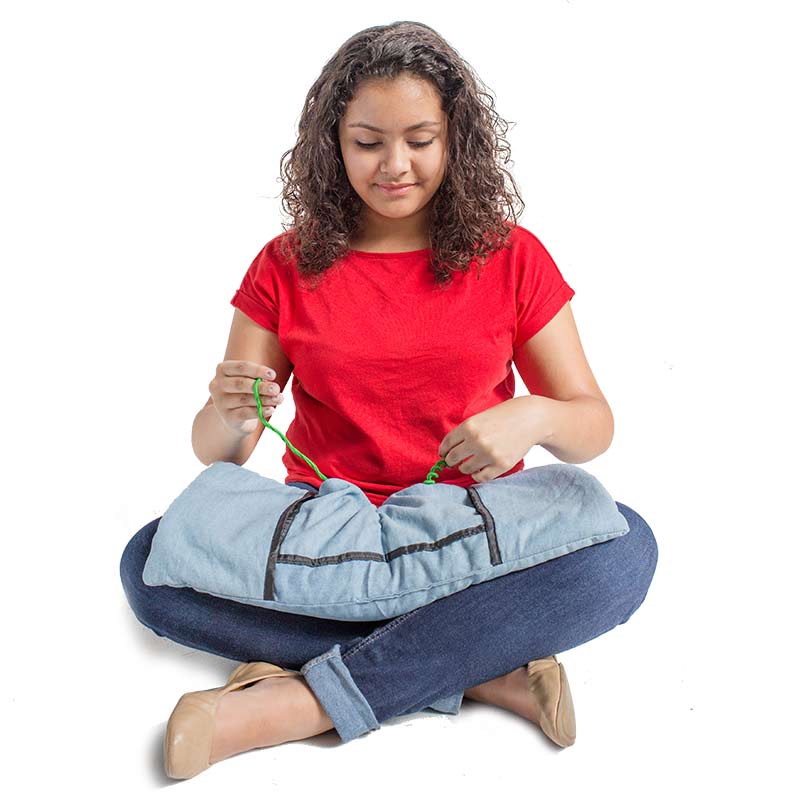Teens don't like to stand out so it's vital to find subtle ways to address their changing sensory needs. Whether your teen is a sensory seeker, under responsive or hyper responsive, the challenges of sitting in school, taking exams or socializing can raise stress levels. Let's look at a few sensory motor outlets to help teens and adults adapt to the sensory challenges.
Weight and Compression:
Weighted or Compression tools are always great for teens. Weight can be in the form of weighted clothing, a heavy backpack or using weights for exercise. Compression can also be in the form of clothing such as a compression shirt, undershirt, leggings, shorts or even bed sheets.These tools can be used at intervals or throughout the day, without making the teen stand out.
Fidgets and Chewies
For some, just having a fidget handy or something to chew on is the ticket to a stress-less day. Fidgets and chewies come in a variety of forms so it's best to let your teen drive the choice. In addition, offering crunchy foods, ice pops, gum or evening practice on a wind instrument can help with oral motor skills and sensory integration.
Vibration and Touch
Some teens respond better to a deeper touch sensation, such as vibration, whereas others will prefer a lighter touch or touch exploration. Offering options is key to finding the best tool for them, which can be as simple as an electric toothbrush, a vibrating tool or a favorite piece of clothstuffed into the side pocket of their pants.
Sports
Movement. Yoga. Exercise. Getting your teen moving is key and this is often best accomplished through a scheduled activity such as a biking club, karate lessons, yoga classes, or team sports. Regular attendance is critical, ideally a few times a week. Exercise provides lifelong benefits in health, fitness, sportsmanship, social skills and wellbeing.
Heavy Hand Work
Many teens seldom use their hands outside of a video game or social media app on their phone. Be sure your teens have scheduled chores, such as doing their own laundry, mowing the lawn, cleaning up part of the house or washing dishes. In addition, encourage your teens to make dinner once a week or pack their own lunch. These activities provide heavy hand work (baking is great for this and so is using putty) as well as added responsibility.
Art and Music
Other outlets that can act as a wonderful sensory filter with cognitive benefits are art and music. If your teen is so inclined, keep that musical instrument lesson going, have them join the band or take regular art classes. These provide sensory benefits as well as communication and social-emotional benefits.
Remember to let your teen direct their choices. As a parent, be a keen observer and listener, which may provide you with unspoken information. Making no choice is not an option, and difficulty doesn't mean failure. Sticking with something that is challenging can have long-term benefits. In addition, refusal does not mean everything failed. Be patient, yet persistent, and most important, be positive.
Check out our teen-friendly sensory tools.



























Comments